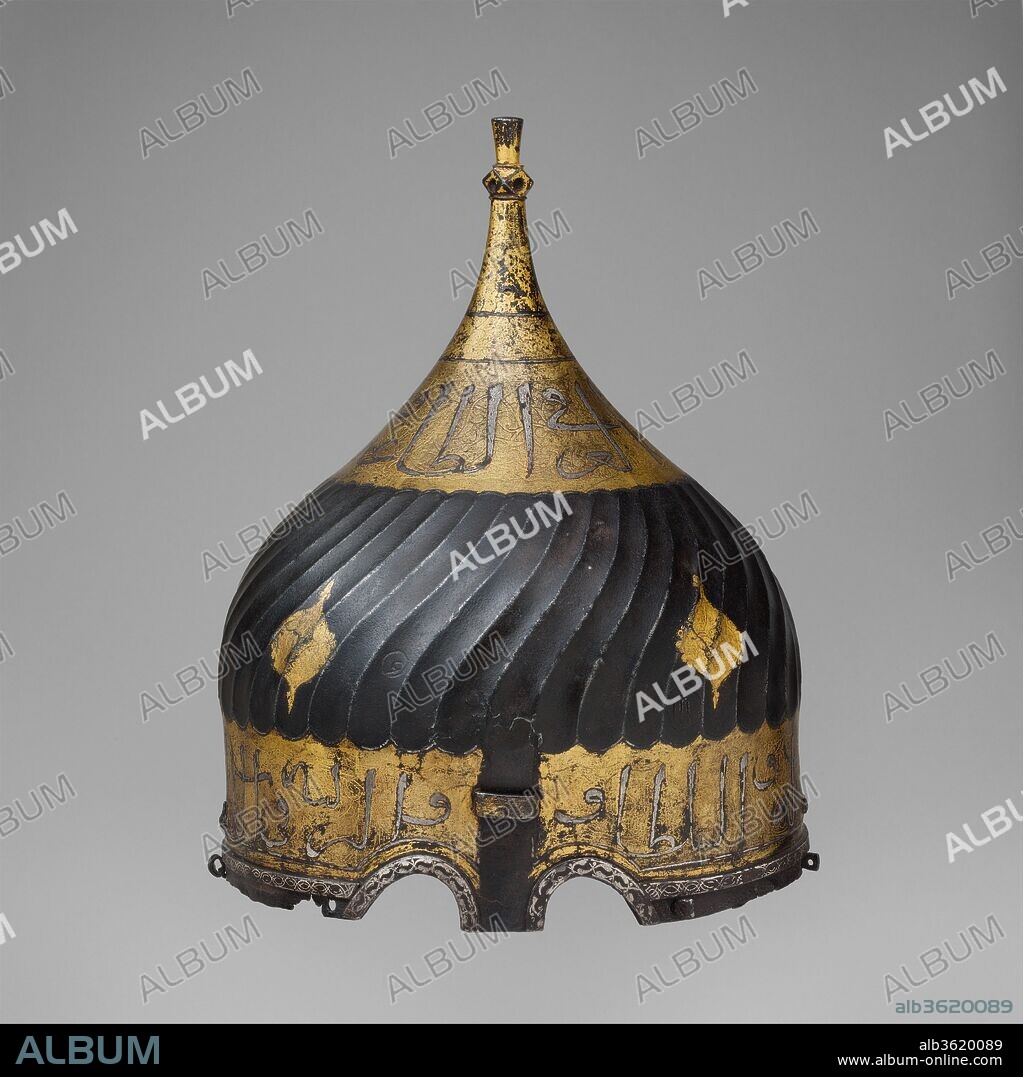alb3620089
Turban Helmet

|
Ajouter à une autre Lightbox |
|
Ajouter à une autre Lightbox |



Avez-vous déjà un compte? S'identifier
Vous n'avez pas de compte ? S'inscrire
Acheter cette image

Titre:
Turban Helmet
Légende:
Voir la traduction automatique
Turban Helmet. Culture: Turkish, possibly Istanbul, in the style of Turkman armor. Dimensions: H. 11 7/8 in. (30.2 cm); Diam. 9 in. (22.9 cm); Wt. 3 lb. 12.9 oz. (1272.9 g). Date: late 15th-16th century.
Helmets of this type are usually called turban helmets becuase of their large bulbous shape and the flutings that imitate the folds of a turban. Because certain dervish groups wore turbans wound with a prescribed number of folds to represent an important mystical number, it is likely that turban helmets were regarded not merely as armor but also as a kind of religious insignia, their very shape marking the wearer as a fighter in a Holy War.
Turban helmets, together with mail-and-plate armor of matching decoration, were intended for the heavy cavalry and are recorded as early as the fourteenth century. The examples exhibited here appear to have belonged to the dynasty of Ak-Koyunlu (White Sheep Turkoman) that ruled northwestern Iran and Anatolia in the fifteenth century. The inscriptions, damascened with gold and silver, glorify temporal rulers, wish the owner well, or give advice on how to attain virtue.
Technique/matériel:
Steel, iron, silver, gold
Musée:
Metropolitan Museum of Art, New York, USA
Crédit:
Album / Metropolitan Museum of Art, NY
Autorisations:
Modèle: Non - Propriété: Non
Questions sur les droits?
Questions sur les droits?
Taille de l'image:
3976 x 3981 px | 45.3 MB
Taille d'impression:
33.7 x 33.7 cm | 13.3 x 13.3 in (300 dpi)
Mots clés:
 Pinterest
Pinterest Twitter
Twitter Facebook
Facebook Copier le lien
Copier le lien Email
Email
